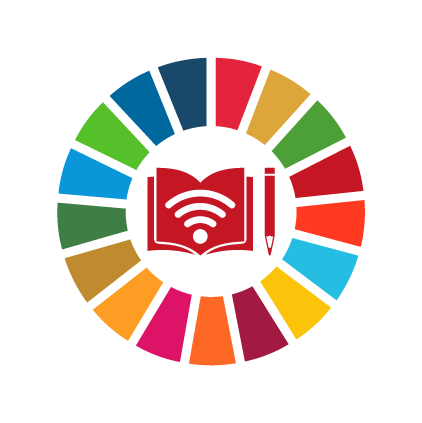Zimbabwe
Background Information
Region
Sub-Saharan Africa
World Bank income group
Lower middle income
Percent of population aged 10-24
33% (UNFPA, 2020)
Total primary school age population (both sexes)
3,072,735 (UIS, 2022)
Total secondary school age population (both sexes)
2,200,218 (UIS, 2022)
Proportion of women aged 20-24 years who were married or in a union before age 18
(% of women aged 20-24)34%
Source: UNSDG , 2019
Adolescent birth rate
(per 1,000 women ages 15-19)108
Source: UN Human Development Reports , 2017
Percentage of women who ever experienced physical violence since age 15
(% of women 15-49)35%
Source: DHS , 2015
Percentage of married women employed in the last 12 months
(% of married or in-union women 15-49)55%
Source: DHS , 2015
Education Snapshot Back to Top
Number of years of free primary and secondary education guaranteed in legal frameworks
No data available
Percentage of upper secondary schools providing life skills-based HIV and sexuality education within the formal curriculum or as part of extra-curricular activities
Percentage of schools67%
Source: UNESCO , 2020
Proportion of schools with access to single-sex basic sanitation facilities
Percentage of schools-
Primary 93%
(2020)
-
Lower secondary 94%
(2020)
-
Upper secondary 97%
(2020)
Source: UIS
Women as a percentage of teachers in tertiary education
No data available
Men as a percentage of teachers in pre-primary education
Men as a percentageSource: UIS , 2021
Expenditure on education as a percentage of total government expenditure
% GDP spent on educationSource: UIS , 2020
Gender parity index for achievement in mathematics, by education level (ratio)
No data available
Gender parity index for achievement in reading, by education level (ratio)
No data available
Proportion of students at the end of primary education achieving at least a minimum proficiency level in reading
No data available
Proportion of students at the end of primary education achieving at least a minimum proficiency level in mathematics
-
Female 24%
Female: UIS, 2013
Experiencing bullying in the last 12 months in lower secondary education
No data available
Youth not in education, employment or training
-
Female 36%
-
Male 25%
Female: ILO, 2021
Male: ILO, 2021
Completion rate
Primary school age
-
Female 92%
-
Male 86%
Female: UIS, 2019
Male: UIS, 2019
Lower secondary school age
-
Female 53%
-
Male 44%
Female: UIS, 2019
Male: UIS, 2019
Upper secondary school age
-
Female 14%
-
Male 17%
Female: UIS, 2019
Male: UIS, 2019
Out-of-school rate
Primary school
-
Female 4%
-
Male 5%
Female: UIS, 2019
Male: UIS, 2019
Lower secondary school
-
Female 24%
-
Male 27%
Female: UIS, 2019
Male: UIS, 2019
Upper secondary school
-
Female 54%
-
Male 48%
Female: UIS, 2019
Male: UIS, 2019
Legal Frameworks Back to Top
Presence of legislation on child protection, to prevent corporal punishment in schools
1
No protection from violence in educational institutions
Source: HerAtlas , 2022
Presence of legislation protecting the right to education without discrimination based on sex/gender
2
Only enshrines the right to education or provides for a limited protection of this right
Source: HerAtlas , 2022
Presence of legislation to protect and facilitate education of pregnant adolescent girls
5
Protection of the right to education of pregnant and/or parenting girls
Source: HerAtlas , 2022
Existence of processes to support coordinated action on gender equality in and through education by ministries, civil society, youth organizations and other actors
Data coming soon!
Existence of systematic processes to review and update curricula and learning resources, with a view to eradicating gender stereotypes and promoting gender equality
Data coming soon!
Training on gender-responsive pedagogies is embedded in teacher training programmes
Data coming soon!
Programs Back to Top
Project/Program
Accelerated Learning Program
Project/Program
A New Equilibrium for Girls
Project/Program
CAMFED Association
Project/Program
Community Action Plan
Funding Initiative/Portfolio
Community Grants Program
Funding Initiative/Portfolio
Comprehensive scholarship programme
Funding Initiative/Portfolio
Education Out Loud (EOL)
Project/Program
EI/ AOb Child Labour Projects: Transnational Best Practices and Union Impacts
Advocacy Campaign/Project
Enough
Funding Initiative/Portfolio
Gender Equity/Education Funding
Project/Program
Girls' Education Challenge Transition (GEC-T)
Project/Program
Grassroot Soccer Curriculum
Project/Program
Improving Girls’ Access through Transforming Education (IGATE)
Project/Program
Leading Community Action for Vulnerable Girls: Young African women at the forefront of COVID-19
Project/Program
Patsy Collins Trust Fund Initiative (PCTFI) – Cohort 3
Research Project/Report/Study
Programmatic approaches to the gender-related impacts of COVID-19 on education: Lessons from 2020
Research Project/Report/Study
School-Related Gender-Based Violence: A Whole School Approach Pilot Initiative
Project/Program
Science, Technology, Engineering and Mathematics
Project/Program
Strengthening Opportunities for Adolescent Resilience (SOAR)
Network/Convening/Conference
Supporting Adolescent Girls’ Education (SAGE)
Project/Program
Teacher Professional Development
Research Project/Report/Study
The COVID-19 Crisis and its Impact on Global Education
Research Project/Report/Study
The Effect of COVID-19 on Education in Africa and its Implications for the Use of Technology: A Survey of the Experiences and Opinions of Educators and Technology Specialists
Project/Program
The Virtuous Cycle of Girls’ Education
Project/Program
Transition Guides/Peer Educators
Project/Program
Using Technology to Enhance the Re-introduction of Education amongst the Most Vulnerable Girls in Zimbabwe
Project/Program
Youth Clubs
Project/Program
Youth Enterprise
Project/Program
Zimbabwe Girls Secondary Education 2012 - 2023
Government Programs Back to Top
Project/Program
Literacy Boost
Project/Program
DREAMS
Project/Program
Improving Gender Attitudes, Transition and Education Outcomes (IGATE) Zimbabwe
Project/Program
Secondary School Bursaries
Project/Program
Accelerated Funding for Humanitarian Aid in Zimbabwe 2020-2021
Project/Program
Zimbabwe Education Development Fund Phase II 2012 - 2019
Network/Convening/Conference
Southern and Eastern Africa Consortium for Monitoring Educational Quality (SACMEQ)
